 Since the beginning of time, in all civilizations, it has been necessary for people who are deaf to take an active role as self-advocates. For this historically marginalized group, fighting for their rights (and the rights of others) has always been a matter of survival. There are times when the only person who can really understand a deaf individual is another person who is deaf. This is true when it comes to language skills, since not everyone uses formal American Sign Language, and it is also true when it comes to recognizing and navigating instances of institutional oppression.
Since the beginning of time, in all civilizations, it has been necessary for people who are deaf to take an active role as self-advocates. For this historically marginalized group, fighting for their rights (and the rights of others) has always been a matter of survival. There are times when the only person who can really understand a deaf individual is another person who is deaf. This is true when it comes to language skills, since not everyone uses formal American Sign Language, and it is also true when it comes to recognizing and navigating instances of institutional oppression.
Over the past couple decades, as the sign language interpreting profession has evolved, the interpreting community has come to better understand and embrace the role of deaf individuals as linguistic and cultural gatekeepers. Certified Deaf Interpreters (CDIs) are extremely effective at bridging the sometimes vast and persistent gaps that exist between people who are deaf and those who can hear.
Deaf interpreters work alongside hearing ASL interpreters to ensure accurate communication between deaf individuals whose native language is visual. The deaf interpreter gathers and relays information to the deaf consumer(s) using specialized communication strategies, while partnering with a hearing interpreter to communicate information to and from any hearing parties.
What Types of Consumers Benefit From Working With CDIs?
 Those who have been in traumatic situations, for example victims of assault or people who are deaf in the Emergency Room, might be best able to communicate through a deaf interpreter. In situations when a deaf individual is subject to police interrogation or asked to provide a statement, a deaf interpreter can offer the critical nuanced understanding that can mean the difference between conviction and acquittal. There are some people who are deaf whose needs will best be met by a deaf interpreter in any medical setting or legal situation, since the outcomes here can deeply impact a person’s life.
Those who have been in traumatic situations, for example victims of assault or people who are deaf in the Emergency Room, might be best able to communicate through a deaf interpreter. In situations when a deaf individual is subject to police interrogation or asked to provide a statement, a deaf interpreter can offer the critical nuanced understanding that can mean the difference between conviction and acquittal. There are some people who are deaf whose needs will best be met by a deaf interpreter in any medical setting or legal situation, since the outcomes here can deeply impact a person’s life.
Immigrants and other individuals whose first language is not ASL, or people who only know informal “home signs” can all benefit from working with a CDI. Those with language difficulties or intellectual disabilities might also better be served by a deaf interpreter. This is because the deaf interpreter will have a more intuitive understanding of signed language as a native user.
“Consumers usually are relieved to know they are able to freely express themselves in their native language without code switching. They also feel assured when they see me repeat their messages to my hearing interpreter team for voice interpretation. They see their original statement being relayed and this makes them trust the interpreting process a little more.” ~ Jason Trzebny, CDI, CLIP-R
“If you go back to the generations in your family, you would have seen or known deaf people historically had been each others’ gatekeepers with information gathering/exchange. This time we’re now giving the formal name and respect to CDIs as paid positions for their decades of devotion to ensuring anyone who is deaf can make informed decisions involving their lives. Therefore, any deaf person can benefit from having a deaf interpreter in all settings – News on TV, music, educational, court, business meetings, hospitals, filling out applications for jobs, car loans, insurance, VRS, weddings, funerals, mental health, social services, AA groups and so on!” ~ Marla Berkowitz, CDI
Communication Strategies Used by Deaf Interpreters
 To connect with deaf consumers, especially those who may have a language deficit for one reason or another, deaf interpreters will first interact with the person to familiarize with their language level and communication preferences. Through these preliminary interactions, the interpreter can assess if the deaf consumer has any unique cultural mannerisms, which can vary depending on factors like age, region, and educational background.
To connect with deaf consumers, especially those who may have a language deficit for one reason or another, deaf interpreters will first interact with the person to familiarize with their language level and communication preferences. Through these preliminary interactions, the interpreter can assess if the deaf consumer has any unique cultural mannerisms, which can vary depending on factors like age, region, and educational background.
Deaf interpreters, like all interpreters, come to the assignment as prepared as possible, having reviewed the content and decided on the most effective strategies for relaying the information. They must be flexible in their approach, prepared to synthesize each bit of information to it’s most basic concept, and ready to rearrange the grammatical structure of the message to make better sense to the recipient. When necessary, deaf interpreters will employ the use of notes or drawing pictograms to gather information and ensure clarity.
“I will elaborate on key concepts that are important to the situation I’m interpreting in. For example, while interpreting the right to counsel in the Miranda Warning I will emphasis on ‘Anytime you can stop, now or later. If you feel you need help or unsure, you must say “I WANT a lawyer.” If you want a lawyer it does not mean you are guilty or not. Right now you fine that you have no lawyer here and still want to talk to the police?’. Some would argue that this is too much, but I say it’s part of cultural and language mediation.” ~ J.Trzebny
“Deaf interpreters make linguistic decisions about how to convey the intended message by using the consumer’s sign preferences, breaking down concepts that match their present world view, and/or utilize a lot of visual gestures (this is not the same as a pantomime because the integrity of facial and body language expression comes from the grammar).” ~ Regan Thibodeau, CDI, CLIP-R
Working as a Team with Hearing Interpreters
 The most important thing for hearing interpreters to consider is that not all CDIs are the same, therefore they will not all employ the same strategies or have the same communication preferences. To work most effectively as a team, hearing and deaf interpreters should meet before any assignment (if possible) to establish a rapport and discuss the best ways to meet everyone’s needs.
The most important thing for hearing interpreters to consider is that not all CDIs are the same, therefore they will not all employ the same strategies or have the same communication preferences. To work most effectively as a team, hearing and deaf interpreters should meet before any assignment (if possible) to establish a rapport and discuss the best ways to meet everyone’s needs.
Hearing interpreters can use strategies such as Pidgin Signed English (PSE), which is a combination of English and ASL, to relay the speaker’s affect; for example anger or sarcasm. Hearing interpreters should be able to break the message down to it’s most important points. By communicating openly with the deaf interpreter, the hearing interpreter can learn their preferred language style, the amount of information they are able to intake at one time, and how the deaf interpreter envisions the information being organized. Communication is the key to success!
- Use simultaneous interpreting strategies with emphasis on majority of the concepts in English, if DI prefers.
- During simultaneous and/or consecutive interpreting, provide a chunk of information at a time (to be determined between deaf and hearing interpreters.)
- Provide environmental information (someone made an announcement that is not visible), the intentions/goals/intonations of the speakers, etc. which all are not visible to the deaf interpreter.
- “Monitor and subtly feed information (correct, add, or modify as needed) deaf interpreters’ work to ensure the content is being understood and relay accurately.“
~ M. Berkowitz
“I seek their strengths and preferences and then I work with them instead of forcing them to go against themselves and we’ll be doing disservice to the customer. I can understand everything… So I must remain fluid and my ream must correct me if I miss or mess up so that the end result is the customer doing well. It’s not easy, and some [hearing interpreters] are terrific and some [aren’t]. They make or break me. The team must have flexibility, respect, honor, and trust to make it work.” ~ Ellen Roth, CDI, CLIP-R
What CDIs Want You to Know About Their Job
 There are many different situations that call for deaf interpreters, and all deaf interpreters have different strengths. Deaf interpreters can effectively fill the knowledge and information gaps in nuanced discussions while improving the accuracy of the message as it is understood by the deaf individual. They can help to identify consumer strengths and weaknesses, background, and experience and then, from that place, help to filter through information.
There are many different situations that call for deaf interpreters, and all deaf interpreters have different strengths. Deaf interpreters can effectively fill the knowledge and information gaps in nuanced discussions while improving the accuracy of the message as it is understood by the deaf individual. They can help to identify consumer strengths and weaknesses, background, and experience and then, from that place, help to filter through information.
Deaf interpreters are sensitive to the injustices faced by deaf individuals and marginalized communities. They have a cultural awareness that cultivates trust. Deaf interpreting has been documented since the 18th century, and is finally being professionally recognized as highly valuable in the field.
“CDI is great for translations like paperwork, contracts, videos, etc. [When it comes to] teaming, it’s a feat. Need more respect for all interpreters and CDIs.” ~ E. Roth
“I wish that more people would understand two things about us. 1) Deaf Interpreters can be for everyone, especially for deaf youth in any
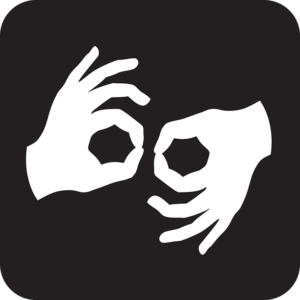 situation and specifically in the schools. 2) It is better to spend the money on a hearing-deaf interpreting team to get best results in a shorter amount of time. Often I get called in appointments later as a last resort option and quickly the situation is rectified. The latter method incur more costs from repeated meetings.” ~ R. Thibodeau
situation and specifically in the schools. 2) It is better to spend the money on a hearing-deaf interpreting team to get best results in a shorter amount of time. Often I get called in appointments later as a last resort option and quickly the situation is rectified. The latter method incur more costs from repeated meetings.” ~ R. Thibodeau
The unique position of the Deaf interpreter within the interpreting community is finally gaining the widespread recognition it deserves. CDIs can be a critical piece when attempting to fill the language and culture gaps between deaf and hearing parties, and their skills should be utilized to ensure accurate and effective communication. As people come to understand this, we all move one step closer to equal access.
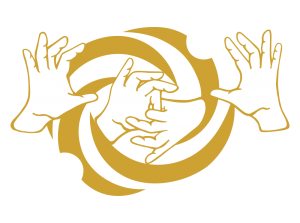





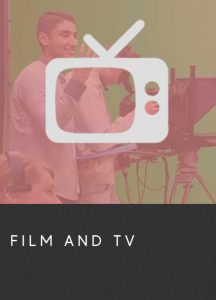





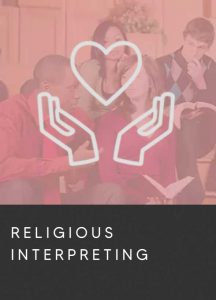
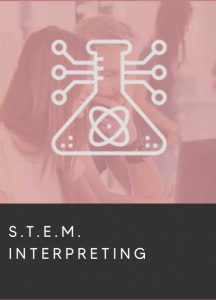
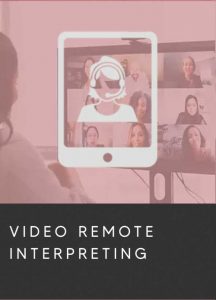
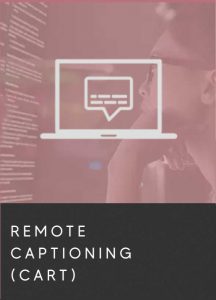

 Since the beginning of time, in all civilizations, it has been necessary for people who are deaf to take an active role as self-advocates. For this historically marginalized group, fighting for their rights (and the rights of others) has always been a matter of survival. There are times when the only person who can really understand a deaf individual is another person who is deaf. This is true when it comes to language skills, since not everyone uses formal American Sign Language, and it is also true when it comes to recognizing and navigating instances of institutional oppression.
Since the beginning of time, in all civilizations, it has been necessary for people who are deaf to take an active role as self-advocates. For this historically marginalized group, fighting for their rights (and the rights of others) has always been a matter of survival. There are times when the only person who can really understand a deaf individual is another person who is deaf. This is true when it comes to language skills, since not everyone uses formal American Sign Language, and it is also true when it comes to recognizing and navigating instances of institutional oppression. Those who have been in traumatic situations, for example victims of assault or people who are deaf in the Emergency Room, might be best able to communicate through a deaf interpreter. In situations when a deaf individual is subject to police interrogation or asked to provide a statement, a deaf interpreter can offer the critical nuanced understanding that can mean the difference between conviction and acquittal. There are some people who are deaf whose needs will best be met by a deaf interpreter in any medical setting or legal situation, since the outcomes here can deeply impact a person’s life.
Those who have been in traumatic situations, for example victims of assault or people who are deaf in the Emergency Room, might be best able to communicate through a deaf interpreter. In situations when a deaf individual is subject to police interrogation or asked to provide a statement, a deaf interpreter can offer the critical nuanced understanding that can mean the difference between conviction and acquittal. There are some people who are deaf whose needs will best be met by a deaf interpreter in any medical setting or legal situation, since the outcomes here can deeply impact a person’s life. To connect with deaf consumers, especially those who may have a language deficit for one reason or another, deaf interpreters will first interact with the person to familiarize with their language level and communication preferences. Through these preliminary interactions, the interpreter can assess if the deaf consumer has any unique cultural mannerisms, which can vary depending on factors like age, region, and educational background.
To connect with deaf consumers, especially those who may have a language deficit for one reason or another, deaf interpreters will first interact with the person to familiarize with their language level and communication preferences. Through these preliminary interactions, the interpreter can assess if the deaf consumer has any unique cultural mannerisms, which can vary depending on factors like age, region, and educational background. The most important thing for hearing interpreters to consider is that not all CDIs are the same, therefore they will not all employ the same strategies or have the same communication preferences. To work most effectively as a team, hearing and deaf interpreters should meet before any assignment (if possible) to establish a rapport and discuss the best ways to meet everyone’s needs.
The most important thing for hearing interpreters to consider is that not all CDIs are the same, therefore they will not all employ the same strategies or have the same communication preferences. To work most effectively as a team, hearing and deaf interpreters should meet before any assignment (if possible) to establish a rapport and discuss the best ways to meet everyone’s needs. There are many different situations that call for deaf interpreters, and all deaf interpreters have different strengths. Deaf interpreters can effectively fill the knowledge and information gaps in nuanced discussions while improving the accuracy of the message as it is understood by the deaf individual. They can help to identify consumer strengths and weaknesses, background, and experience and then, from that place, help to filter through information.
There are many different situations that call for deaf interpreters, and all deaf interpreters have different strengths. Deaf interpreters can effectively fill the knowledge and information gaps in nuanced discussions while improving the accuracy of the message as it is understood by the deaf individual. They can help to identify consumer strengths and weaknesses, background, and experience and then, from that place, help to filter through information. situation and specifically in the schools. 2) It is better to spend the money on a hearing-deaf interpreting team to get best results in a shorter amount of time. Often I get called in appointments later as a last resort option and quickly the situation is rectified. The latter method incur more costs from repeated meetings.” ~ R. Thibodeau
situation and specifically in the schools. 2) It is better to spend the money on a hearing-deaf interpreting team to get best results in a shorter amount of time. Often I get called in appointments later as a last resort option and quickly the situation is rectified. The latter method incur more costs from repeated meetings.” ~ R. Thibodeau Once you’ve hired a person who is deaf onto your staff, it’s important to provide the support they need to flourish at your company. Deaf employees offer their own unique perspectives and add strength to the overall team. By providing qualified ASL business interpreting, companies can give deaf employees the opportunity to contribute their skills and expertise to the workplace.
Once you’ve hired a person who is deaf onto your staff, it’s important to provide the support they need to flourish at your company. Deaf employees offer their own unique perspectives and add strength to the overall team. By providing qualified ASL business interpreting, companies can give deaf employees the opportunity to contribute their skills and expertise to the workplace. Business Interpreters understand that people take their careers very seriously, and that there is no room for miscommunication in a workplace environment. They are highly fluent in both American Sign Language and formal English. They are also able to accurately interpret common industry phrases, business lingo, and metaphors.
Business Interpreters understand that people take their careers very seriously, and that there is no room for miscommunication in a workplace environment. They are highly fluent in both American Sign Language and formal English. They are also able to accurately interpret common industry phrases, business lingo, and metaphors. It is important for Business Interpreters to feel comfortable in any size office or boardroom. A qualified interpreter will have experience within the business world and a thorough understanding of how the corporate structure works. Business Interpreters take the time to research each organization and come prepared with basic knowledge about their clients and consumers.
It is important for Business Interpreters to feel comfortable in any size office or boardroom. A qualified interpreter will have experience within the business world and a thorough understanding of how the corporate structure works. Business Interpreters take the time to research each organization and come prepared with basic knowledge about their clients and consumers. In most businesses, deaf employees remain the minority, so other employees and managers might not know the best way to work collaboratively. A Business Interpreter can help fill those gaps in understanding. These interpreters will feel confident respectfully advocating for themselves or the deaf consumers if they feel they need to sit or stand in a specific spot to be most effective. They work to make the interaction smooth and successful for everyone involved.
In most businesses, deaf employees remain the minority, so other employees and managers might not know the best way to work collaboratively. A Business Interpreter can help fill those gaps in understanding. These interpreters will feel confident respectfully advocating for themselves or the deaf consumers if they feel they need to sit or stand in a specific spot to be most effective. They work to make the interaction smooth and successful for everyone involved.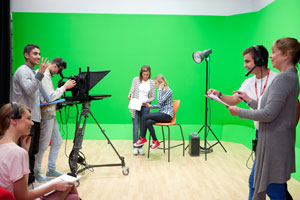 Casting directors might shy away from deaf TV and film personalities because they simply don’t understand how to communicate, or perhaps they don’t understand that the benefits far outweigh any costs. But with audiences increasingly demanding diversity in the media and responding positively to shows that explore different cultural identities, entertainment outlets are starting to come around. At LC Interpreting Services, we make the process of hiring an on-set interpreter seamless and simple, while offering top quality communication access.
Casting directors might shy away from deaf TV and film personalities because they simply don’t understand how to communicate, or perhaps they don’t understand that the benefits far outweigh any costs. But with audiences increasingly demanding diversity in the media and responding positively to shows that explore different cultural identities, entertainment outlets are starting to come around. At LC Interpreting Services, we make the process of hiring an on-set interpreter seamless and simple, while offering top quality communication access. Basic fluency in the spoken and signed languages is a good start but qualified Entertainment Interpreters should be certified professionals with strong language skills and experience. They will also understand any relevant vocabulary and common industry phrases. Since most television interpreters work on sets, which can be unpredictable situations, it is important that an Entertainment Interpreter’s ASL/English skills are fast and effective.
Basic fluency in the spoken and signed languages is a good start but qualified Entertainment Interpreters should be certified professionals with strong language skills and experience. They will also understand any relevant vocabulary and common industry phrases. Since most television interpreters work on sets, which can be unpredictable situations, it is important that an Entertainment Interpreter’s ASL/English skills are fast and effective. In the ever-changing world of TV and movies, Entertainment Interpreters arrive to each assignment prepared by knowing the script and understanding the type of program or film they will be working on. For talk shows, interpreters will prepare by researching the guest they will be interpreting for that day. These interpreters are flexible with their time, understanding that a day may get cut short or run much longer than expected. They know their way around film and TV sets and feel comfortable interacting with producers, cast, and crew. Qualified Entertainment Interpreters know where to stand, when to interpret, and when to get out of the way.
In the ever-changing world of TV and movies, Entertainment Interpreters arrive to each assignment prepared by knowing the script and understanding the type of program or film they will be working on. For talk shows, interpreters will prepare by researching the guest they will be interpreting for that day. These interpreters are flexible with their time, understanding that a day may get cut short or run much longer than expected. They know their way around film and TV sets and feel comfortable interacting with producers, cast, and crew. Qualified Entertainment Interpreters know where to stand, when to interpret, and when to get out of the way. Sometimes a script will have a last minute change, or something off the cuff will happen during a live broadcast, or delays create a time crunch or extended day. Qualified Entertainment Interpreters know the ins and outs of the industry and are able to professionally manage each assignment while still providing top quality services for deaf consumers.
Sometimes a script will have a last minute change, or something off the cuff will happen during a live broadcast, or delays create a time crunch or extended day. Qualified Entertainment Interpreters know the ins and outs of the industry and are able to professionally manage each assignment while still providing top quality services for deaf consumers. It is important for Entertainment Interpreters to reserve judgement and prevent their personal opinions from impacting service when potentially working with public figures in the entertainment industry. Interpreters must overcome preconceptions if they have any, which might include being “star struck!”
It is important for Entertainment Interpreters to reserve judgement and prevent their personal opinions from impacting service when potentially working with public figures in the entertainment industry. Interpreters must overcome preconceptions if they have any, which might include being “star struck!” Entertainment Interpreters not only provide interpretation, but they effectively bridge the communication gap and help foster cultural understanding between deaf and hearing individuals on set. Working with a top quality interpreter for film or TV provides an opportunity to spread information beyond the cast and crew to wider audiences. When everyone is working together and comfortable in their roles, it comes through in the final product.
Entertainment Interpreters not only provide interpretation, but they effectively bridge the communication gap and help foster cultural understanding between deaf and hearing individuals on set. Working with a top quality interpreter for film or TV provides an opportunity to spread information beyond the cast and crew to wider audiences. When everyone is working together and comfortable in their roles, it comes through in the final product. Picture this: you’re attending a lecture from a highly respected professional in your field. The lecture was well publicized and draws a large regional or national audience. When this person takes the stage to speak, however, you can hardly understand a word they say. Your peers are jotting down notes and nodding their heads in agreement, but you feel completely lost. When the lecture ends, the other attendees all begin discussing the topics amongst themselves, but once again you are left out of the conversation.
Picture this: you’re attending a lecture from a highly respected professional in your field. The lecture was well publicized and draws a large regional or national audience. When this person takes the stage to speak, however, you can hardly understand a word they say. Your peers are jotting down notes and nodding their heads in agreement, but you feel completely lost. When the lecture ends, the other attendees all begin discussing the topics amongst themselves, but once again you are left out of the conversation. Providing qualified Platform Interpreters, also known as Conference Interpreters, helps ensure that people who are deaf can access and participate equally in organized events such as lectures, seminars, workshops, trainings, and professional development events. The services of these interpreters will be utilized during formal presentations, breakout sessions, and all social opportunities throughout the conference. High quality Platform Interpreters possess a skill set which enables them to accurately communicate the important and often specific information being presented in real-time.
Providing qualified Platform Interpreters, also known as Conference Interpreters, helps ensure that people who are deaf can access and participate equally in organized events such as lectures, seminars, workshops, trainings, and professional development events. The services of these interpreters will be utilized during formal presentations, breakout sessions, and all social opportunities throughout the conference. High quality Platform Interpreters possess a skill set which enables them to accurately communicate the important and often specific information being presented in real-time. People around the world watched on television as the interpreter at Nelson Mandela’s funeral signed nonsense to deaf South Africans. It was a very public example of an unfortunate problem. This type of service is unacceptable, and it is the responsibility of event organizers to make sure that deaf attendees get the quality of communication access that they deserve.
People around the world watched on television as the interpreter at Nelson Mandela’s funeral signed nonsense to deaf South Africans. It was a very public example of an unfortunate problem. This type of service is unacceptable, and it is the responsibility of event organizers to make sure that deaf attendees get the quality of communication access that they deserve. Simultaneous interpreting can be a real challenge without sufficient preparation. To accurately represent both event speakers and deaf consumers, qualified Conference Interpreters will do their homework. They will research the mission of the organization and the intention of the event. They will learn the names of the presenters and a little bit about their background. A great Platform Interpreter will request conference documents, multimedia, and speakers notes in advance. They know the speaker’s motives and are able to faithfully deliver their message.
Simultaneous interpreting can be a real challenge without sufficient preparation. To accurately represent both event speakers and deaf consumers, qualified Conference Interpreters will do their homework. They will research the mission of the organization and the intention of the event. They will learn the names of the presenters and a little bit about their background. A great Platform Interpreter will request conference documents, multimedia, and speakers notes in advance. They know the speaker’s motives and are able to faithfully deliver their message. Conferences are whirlwind events which can overwhelm individuals who aren’t skilled at managing multiple tasks. Interpreters will be utilized during all the different presentations, breakout sessions, workshops, socializing, and networking possibilities
Conferences are whirlwind events which can overwhelm individuals who aren’t skilled at managing multiple tasks. Interpreters will be utilized during all the different presentations, breakout sessions, workshops, socializing, and networking possibilities Depending on the length of the event, the type of event, and the number of deaf attendees present, interpreters will be working in a team of at least two, possibly more ASL interpreters. Supporting the team is one of the most important roles of a Conference Interpreter. Interpreters must communicate their needs while meeting the expectations of other interpreters and deaf consumers.
Depending on the length of the event, the type of event, and the number of deaf attendees present, interpreters will be working in a team of at least two, possibly more ASL interpreters. Supporting the team is one of the most important roles of a Conference Interpreter. Interpreters must communicate their needs while meeting the expectations of other interpreters and deaf consumers. Qualified Conference Interpreters will ensure they have adequate working conditions. This includes contacting the event organizer and letting them know the technical requirements or providing service. Interpreters should also be ready to educate hearing entities about the basic function of an ASL interpreter and how to work with one. In some instances, interpreters must advocate to be on stage, on camera, or near a presenter.
Qualified Conference Interpreters will ensure they have adequate working conditions. This includes contacting the event organizer and letting them know the technical requirements or providing service. Interpreters should also be ready to educate hearing entities about the basic function of an ASL interpreter and how to work with one. In some instances, interpreters must advocate to be on stage, on camera, or near a presenter. Last weekend, singer/songwriter Sia was accompanied by a noteworthy performer as she sang her hit “
Last weekend, singer/songwriter Sia was accompanied by a noteworthy performer as she sang her hit “ There is a fine line between showcasing the beauty of ASL, and utilizing sign language as a gimmick. Hearing artists often toe this line without even considering the opportunities that exist for better collaboration. To give an example, there was a bit of
There is a fine line between showcasing the beauty of ASL, and utilizing sign language as a gimmick. Hearing artists often toe this line without even considering the opportunities that exist for better collaboration. To give an example, there was a bit of  How did the music video for a world renowned artist, starring famous actors, get released with these fairly simple mistakes? In the end, accuracy took a back seat to aesthetics because McCartney’s video was not really intended to provide deaf people with access to his music. The use of ASL was merely an “artistic” choice; it was used to entertain hearing audiences.
How did the music video for a world renowned artist, starring famous actors, get released with these fairly simple mistakes? In the end, accuracy took a back seat to aesthetics because McCartney’s video was not really intended to provide deaf people with access to his music. The use of ASL was merely an “artistic” choice; it was used to entertain hearing audiences. If musicians want to truly connect with the Deaf community, there are plenty of ways to incorporate in Deaf voices into their work. Instead of hiring actors who are not fluent in the language to do ASL interpretation, creative directors could seek out some of the many talented deaf performers who are working hard to make a name for themselves.
If musicians want to truly connect with the Deaf community, there are plenty of ways to incorporate in Deaf voices into their work. Instead of hiring actors who are not fluent in the language to do ASL interpretation, creative directors could seek out some of the many talented deaf performers who are working hard to make a name for themselves. First off, there are some truly incredible Deaf music artists out there. If a hearing performer wants to challenge themselves to be more inclusive, working with a deaf musician could be an enlightening experience.
First off, there are some truly incredible Deaf music artists out there. If a hearing performer wants to challenge themselves to be more inclusive, working with a deaf musician could be an enlightening experience.  music more accessible to the deaf and hard-of-hearing community.”
music more accessible to the deaf and hard-of-hearing community.” 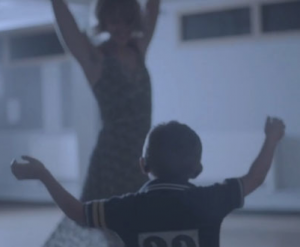 Music artists can work with deaf dancers, as
Music artists can work with deaf dancers, as  Sign language is a cornerstone of Deaf culture, and deaf individuals are very proud of their silent communication. It’s likely Sia was well-intentioned when she had her interpreter dress as a mime, but any message of deaf empowerment becomes a bit muddied when presented with this deaf/mute stereotype. Her performance on SNL was not the first time Sia incorporated sign language into her music. In 2008, her video for “
Sign language is a cornerstone of Deaf culture, and deaf individuals are very proud of their silent communication. It’s likely Sia was well-intentioned when she had her interpreter dress as a mime, but any message of deaf empowerment becomes a bit muddied when presented with this deaf/mute stereotype. Her performance on SNL was not the first time Sia incorporated sign language into her music. In 2008, her video for “ ASL is visually captivating, so it’s no wonder hearing artists are fascinated by this deeply expressive language. It is important, however, for these performers to remember that ASL is a legitimate language, complete with a distinct vocabulary and set of grammar rules. American Sign Language is not arbitrary hand waving– each gesture, facial expression, and classifier impacts the overall meaning. The best way to ensure a performance is culturally competent, respectful, and tactful is to consult with deaf parties directly about their language and expectations.
ASL is visually captivating, so it’s no wonder hearing artists are fascinated by this deeply expressive language. It is important, however, for these performers to remember that ASL is a legitimate language, complete with a distinct vocabulary and set of grammar rules. American Sign Language is not arbitrary hand waving– each gesture, facial expression, and classifier impacts the overall meaning. The best way to ensure a performance is culturally competent, respectful, and tactful is to consult with deaf parties directly about their language and expectations.





